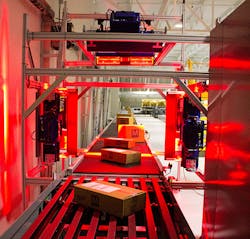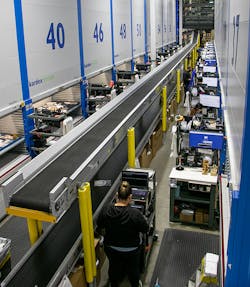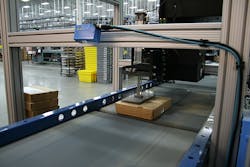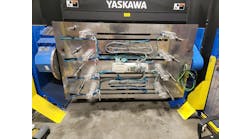Tina Sears is vice president of warehouse operations for Mouser Electronics.
What sorts of sensing technologies have improved the effectiveness and reliability of picking systems and conveyance systems?
Tina Sears, vice president of warehouse operations, Mouser Electronics: Mouser uses the latest in high-speed conveyor systems, including vast filing systems that robotically deliver products to automated packing and shipping machines (Figure 1). This is facilitated by a system of wireless technology, bar codes and SKUs that seamlessly and accurately track orders as they go through the process.
We are currently in an age of sensor technology that is creating new, more efficient experiences for everyone (Figure 2).
Figure 2: The age of sensor technology is creating new, more efficient experiences for everyone. (Source: Mouser Electronics)
Also read: Warehouses continue to improve efficiency with collaborative robots, AMRs and AGV technology
As warehouse distribution centers continue to grow larger, how are tracking and intelligence helping to keep up with customer demands?
Tina Sears, vice president of warehouse operations, Mouser Electronics: Advances in automation are having a transformative effect on many areas of industry, and warehousing and logistics are certainly no exception. Across a broad range of activities, such as picking, packing and labeling, robotic technology is changing the way that companies go about their day-to-day operations.
Mouser is installing an OPEX Perfect Pick system for consolidation, as well as an AutoStore system—investments that are focused on getting customers’ orders processed, picked, packed and shipped in a very short amount of time.
Figure 3: VLMs are essentially giant vertical filing cabinets, complete with shelves and an automated extractor to bring the components to the employee’s workstation. (Source: Mouser Electronics)
Which technologies have allowed warehouses to increase throughput rates while still maintaining accurate order fulfillment?
Tina Sears, vice president of warehouse operations, Mouser Electronics: By early 2022, Mouser will have 120 vertical lift modules (VLMs) installed, which will be the largest installation in the world. VLMs are essentially giant vertical filing cabinets, complete with shelves and an automated extractor to bring the components to the employee’s workstation (Figure 3). This increases efficiency and creates high-density storage and can reduce an employee’s walking time by 45% or more.
In addition, our distribution center features multiple Ultipack and I-Pack machines, a sophisticated automated system for sealing and labeling shipments that can process up to 14 orders per minute (Figure 4).
Our automated systems mean our distribution teams can service our customers in the timeliest manner. Mouser’s 24-hour global distribution center handles tens of thousands of orders per day, processing and shipping to more than 630,000 customers in more than 220 countries and territories.
Figure 4: A sophisticated automated system for sealing and labeling shipments can process up to 14 orders per minute. (Source: Mouser Electronics)
How have automated storage and retrieval systems' roles changed over the past 10 years?
Tina Sears, vice president of warehouse operations, Mouser Electronics: Long gone are the days of manually picking products, walking them to packing and then shipping stations. As a very future-looking company, Mouser is a recognized leader in the use of state-of-the-art technology to quickly, accurately and efficiently serve our customers around the world. Automation boosts efficiency and lowers costs. But these new systems also drive more sustainable operations and improved customer satisfaction. As sensing and robotics technologies continue to improve, we are likely to see continued growth in demand for automated systems.
Given the extraordinary percentage of manual operation in most distribution centers, will the 24/7 fully autonomous warehouse order-fulfillment center ever become commonplace?
Tina Sears, vice president of warehouse operations, Mouser Electronics: More automation is definitely in our future, but at Mouser we never forget the human touch. Automation is here to help our teams of dedicated workers, not replace them. Because we deliver single quantities of components, we will always rely on employees for the special handling that those small orders require. Our adoption of state-of-the-art automation acts primarily as a means of boosting efficiency, productivity, accuracy and speed.
According to market research specialist LogisticsIQ, the global market for warehouse automation will reach $27 billion by 2025, with a compound annual growth rate of 11.7% between 2019 and 2025.










